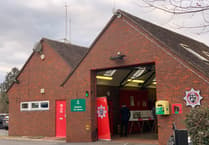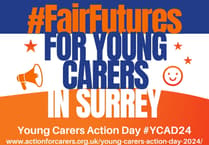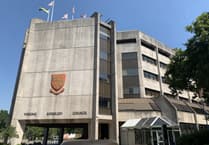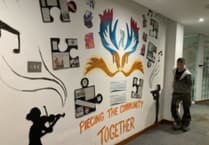FOR this week’s Peeps into the Past, we look at one of the most popular of traditional fairground attractions – the gallopers roundabout, also known as a carousel.
You go round and round while siting on a brightly painted horse – or, sometimes another animal – while holding on to a barley-twist pole.
The gorgeous Edwardian picture postcard of a fairground scene shown here has been supplied by Peeps reader Trevor Howard, who is intrigued by the electric gallopers and its owner Mr J Thomas, presumably of Woking.
The postcard was posted in Reading in 1912. Part of the writing around the top of the carousel reads “Woking Surrey. J Thomas Electric Ga”.
Trevor said: “It appears to be written in twelve equally spaced segments. Because of the circularity, it could start in a number of places, but is likely – from other references – to have been something like ‘J Thomas Electric Galloping Horses Woking Surrey’. It may have repeated twice around the carousel, but it could have had other text on the part hidden from view.”
Trevor said there is little evidence as to who Mr Thomas was. However, the carousel is an early electric one and it is possible Mr Thomas is one of the two gentlemen in the centre of the picture – more likely the man in the straw boater.
Trevor’s research of old local newspapers has revealed the attendance of Mr Thomas’s carousel at various fairs around the country.
The earliest he has found was in 1909, not long after the first electrically-driven carousels arrived in England, and the last was at Wantage Fair in 1915. Mr Thomas was probably born sometime between 1860 and 1885.
Trevor said: “Mr Thomas seems to have mainly toured fairs in Berkshire and Oxfordshire, but also attended the World’s Fair, held annually in Islington from Christmas Eve until the end of January.
“He likely had several attractions. The report of the 1909 Reading Michaelmas Fair states that he also had a ‘bottle shooting saloon’, while a report of 1912 mentions roundabouts in the plural.
“Mr Thomas almost certainly spent the majority of the year travelling from one fair to another. His connection to Woking is uncertain; there are no records of his residing here. He may have had premises for out-of-season storage and maintenance of the equipment.”
There is little documentary record of the development of the very first roundabouts, according to Trevor’s research.
He said: “Simple dobby sets existed in the early 19th century. Crude in construction, the horses were enlarged examples of the rough penny toys.
“Their legs were simply round sticks: their bodies were lumps of deal rounded on one side; their heads were roughly cut from half-inch deal boards and inserted in a groove in their bodies, while the tails and manes were made of strips of rabbit-skin.
“Most roundabouts at this point depended on muscle power to function. Many were turned by children who would work for the showmen in exchange for a free ride. Ponies were also often employed to do this job, in the same way as a horse would turn a gin at a mine or a farm.
“Eventually the application of steam power to fairground rides changed the face of the fairground and the possibilities of the rides. The first evidence of a steam-powered ride dates from 1861.
“During the 1880s, several manufacturers competed to try to make the dobby horses gallop, that is go up and down as well as round in a circle.
“In 1885, Savages of Kings Lynn built their first platform gallopers. The same year Messrs Reynolds and King designed the overhead crank system, which was improved upon the following year by Tidmans of Norwich.
“By the end of the century, crank-action gallopers were being supplied by several British engineers.”
If you have some memories or old pictures relating to the Woking area, call David Rose on 01483 838960, or drop a line to the News & Mail.
David Rose is a local historian and writer who specialises in what he calls “the history within living memory” of people, places and events in the west Surrey area covering towns such as Woking and Guildford. He collects old photos and memorabilia relating to the area and the subject, and regularly gives illustrated local history talks to groups and societies. For enquiries and bookings please phone or email him at: [email protected]




